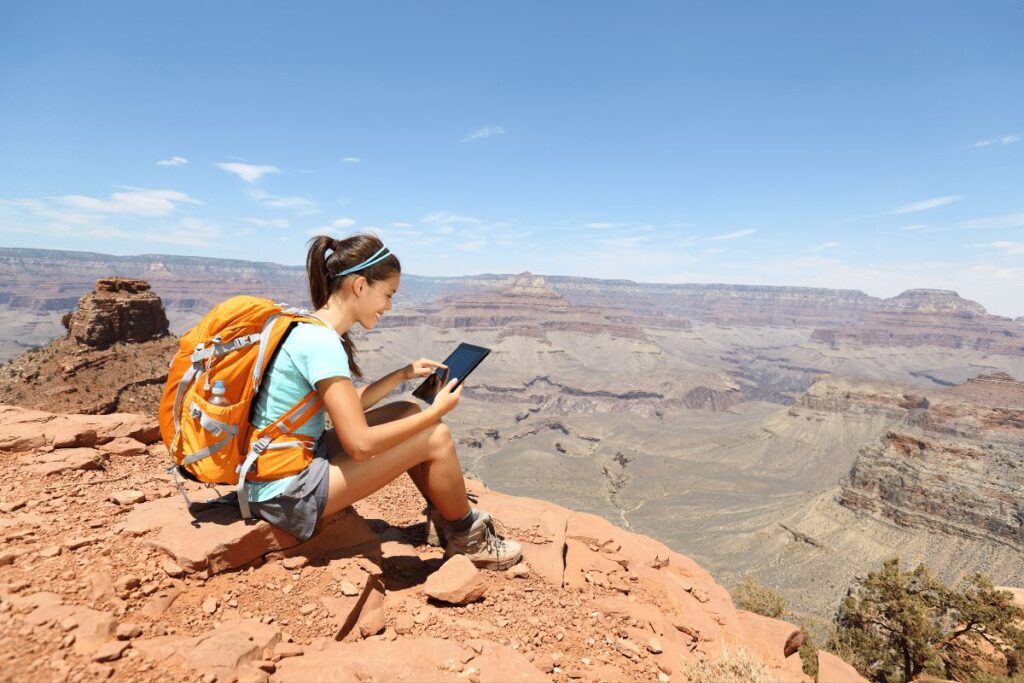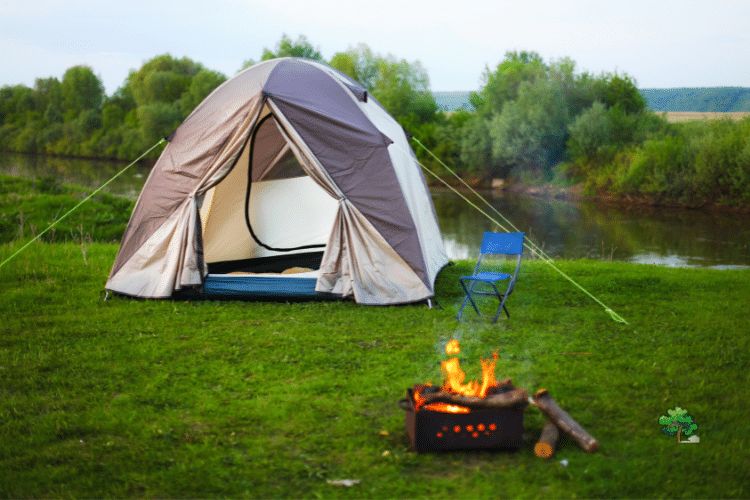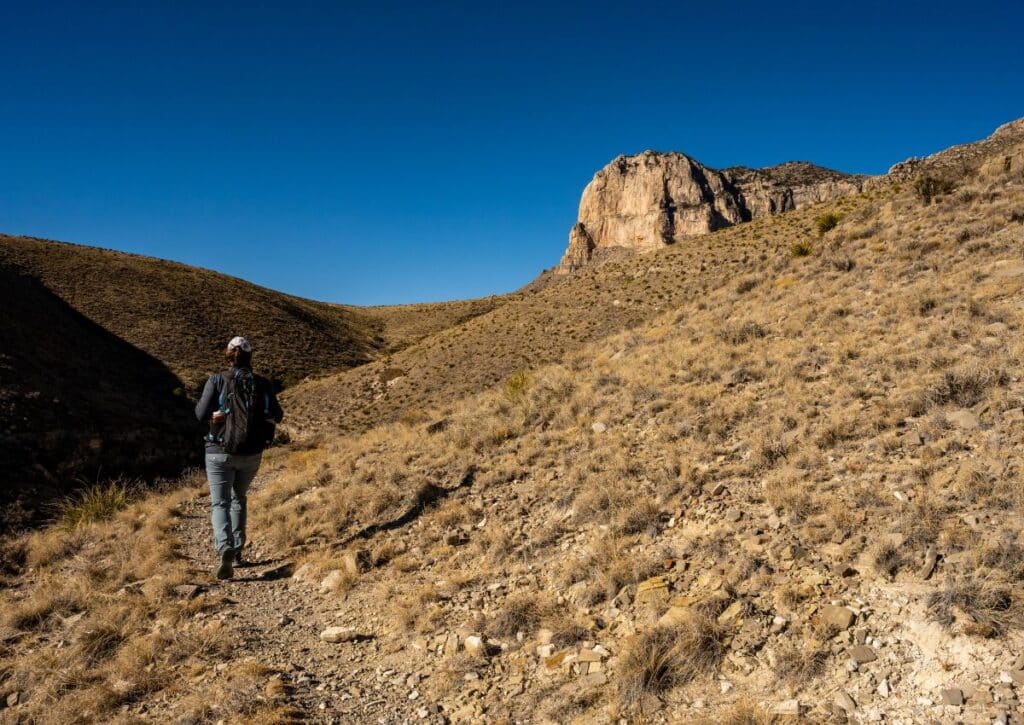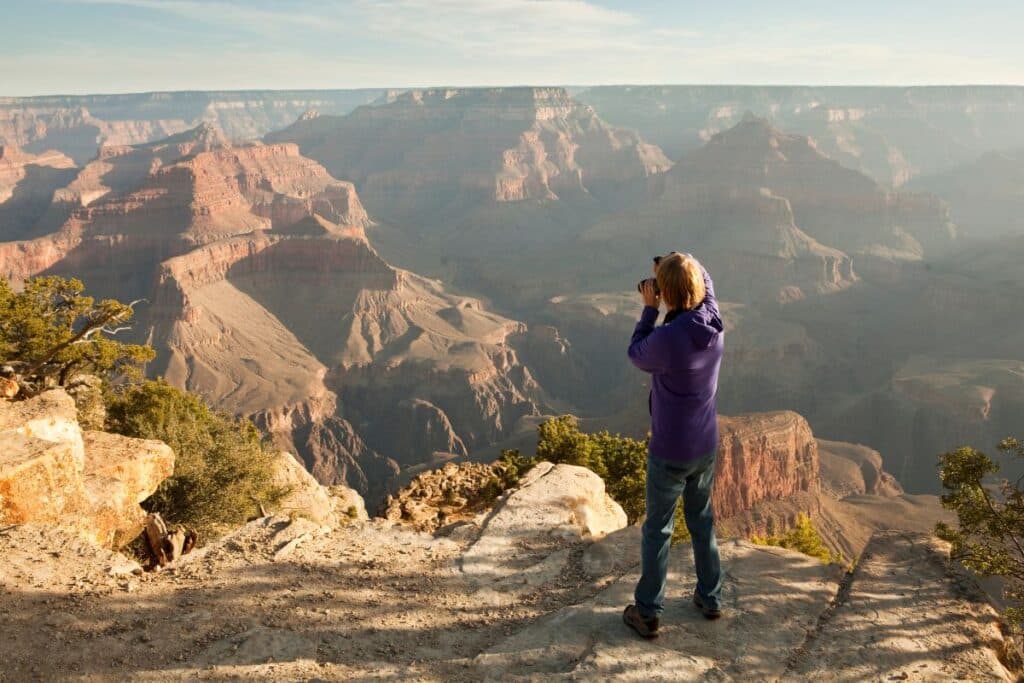Master Hiking in Arizona with 13 expert tips for safe trails and wildlife encounters. Elevate your hike!
Strap on your hiking boots and hit the Arizona trails with confidence! Our guide isn’t just about the walk; it’s about walking smart.
We’ve put together 13 pro tips to tackle Arizona’s unique terrain, from sun-scorched deserts to dizzying canyons. Learn how to gear up, stay safe, and keep your cool in the heat.
We’ll guide you through the best times to hike, how to stay on track, and the essentials you’ll need in your backpack.
Plus, we sprinkle in some savvy advice on wildlife encounters for those moments when you cross paths with Arizona’s natural inhabitants. Whether you’re a trailblazing novice or a seasoned hiker, these insights will elevate your hiking game!
the Quick 5
In Arizona, there are many opportunities to get outside and explore the desert terrain. However, before embarking on a pro-level hike, it is important to be prepared. Here are some tips to help you conquer the desert terrain:
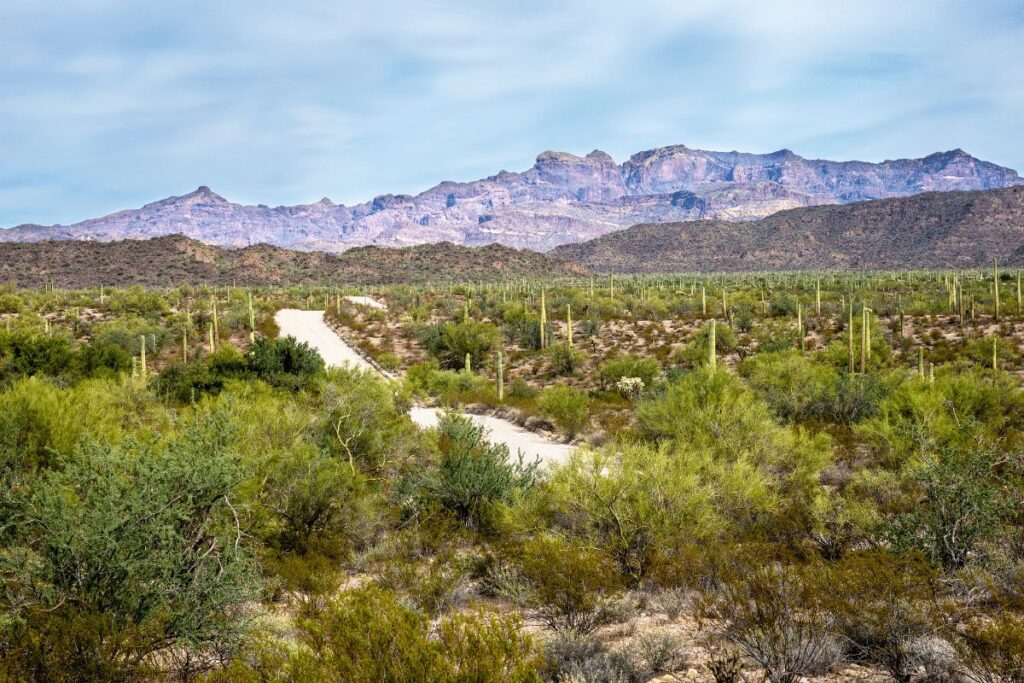
1. Choose the right trail. When selecting a trail, be sure to consider your skill level and fitness level. There are plenty of trails in Arizona that range from easy to strenuous. Do some research ahead of time so you can find a trail that’s right for you.
2. Pack appropriately. Make sure you have all the necessary supplies for your hike, including plenty of water, food, and sunscreen. It’s also a good idea to wear hiking boots and bring a first-aid kit in case of any emergencies.
3. Be aware of the weather conditions. The desert can be extremely hot during the day, so it’s important to start your hike early in the morning or late in the evening when it’s cooler outside. Also, be aware of possible thunderstorms and flash floods which can occur suddenly in this environment.
4 . Watch out for wildlife. When hiking in Arizona, you may encounter some dangerous wildlife, such as snakes and scorpions. Be sure to stay on the trail and avoid any areas where these creatures may be lurking. If you do come across any wildlife, do not approach them and instead back away slowly.
5 . Know your limits. It’s important not to push yourself to do something that’s outside your skill level or physical fitness. If you start feeling tired, take breaks when necessary, and don’t be afraid to turn around if things get too difficult.
Following these tips will help ensure a successful and enjoyable pro-level hiking experience in Arizona. Have fun and be safe!
Safety Tips and Gear
Desert hiking looks deceptively easy – after all, how tough can it be to walk on sand? But there are a few things you should know before you hit the trail. Here are some safety tips and gear recommendations for pro-level desert hiking in Arizona.
The first thing to keep in mind is that the desert is a harsh environment. The sun is relentless, the temperatures are extreme, and the terrain is rugged. You need to be prepared mentally and physically for this challenge.
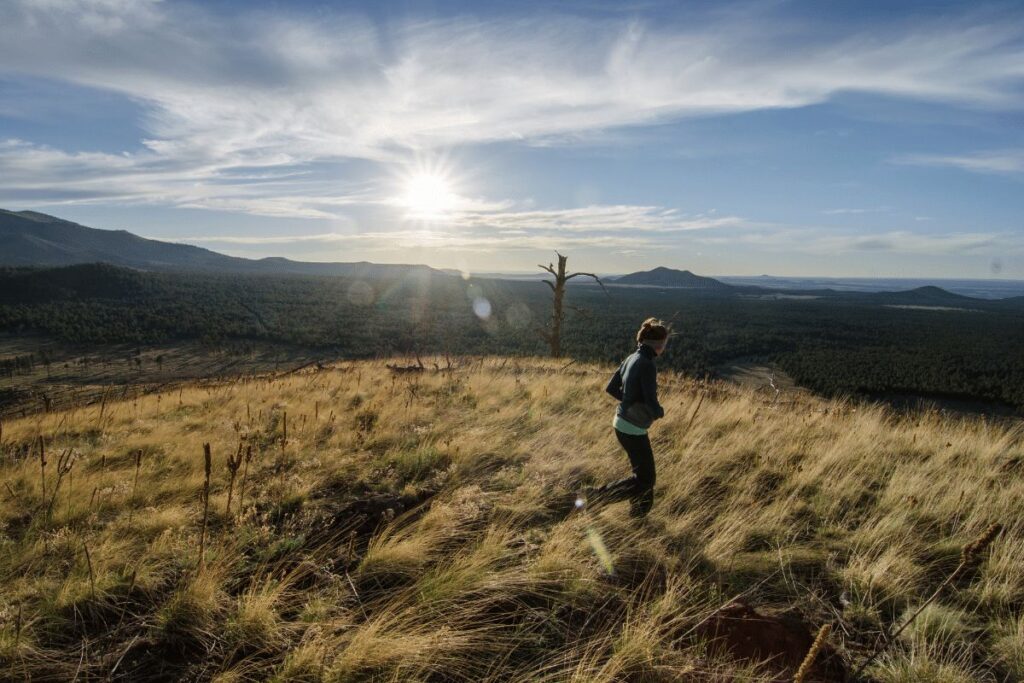
Second, always carry plenty of water and food with you. The desert heat can quickly lead to dehydration, so it’s important to stay hydrated. And since there aren’t many opportunities to stop for food in the desert, pack enough snacks and meals to keep you going.
Third, make sure you have the right gear for the conditions. In addition to sunscreen and a hat, you’ll need sturdy shoes or boots with good traction, plenty of socks (to prevent blisters), and a long-sleeved shirt and pants (to protect against cactus spines and sunburn). A GPS device can also be useful in case you get lost.
Fourth, be aware of your surroundings at all times. Watch for signs of danger, such as snakes or scorpions, and know what to do if you encounter them. And pay attention to your footprints – if you’re leaving a clear trail, it’s easy for rescuers to find you if something goes wrong.
Planning Ahead Before You Go
If you’re planning on heading out into the desert to go hiking, it’s important to plan ahead and be prepared for the conditions you’ll encounter.
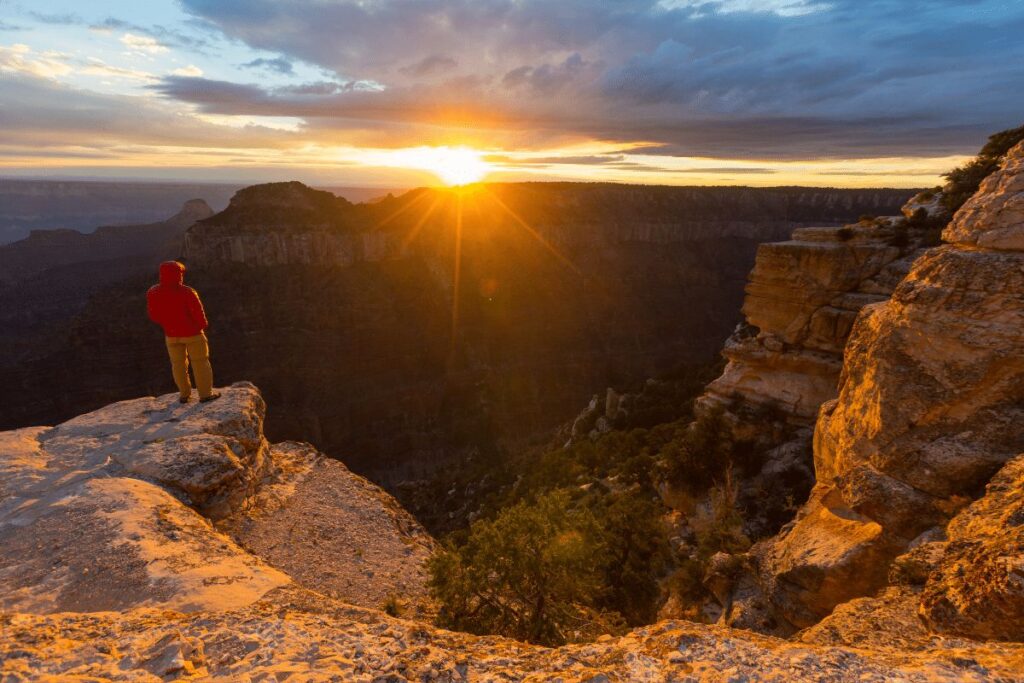
The desert can be a harsh environment, and even experienced hikers can find themselves in trouble if they’re not careful. Here are some tips to help you conquer the desert terrain:
1. Plan your route before you go. Make sure you know where you’re going and have a map or GPS app handy in case you get lost. It’s also a good idea to let someone else know your plans in case something happens to you while you’re out hiking.
2. Bring plenty of water and food with you. The heat and lack of water in the desert can quickly lead to dehydration, so it’s important to stay hydrated by drinking plenty of water throughout your hike. Pack snacks or a meal with you as well, in case you get hungry during your hike.
3. Dress appropriately for the conditions. Wear lightweight, loose-fitting clothing that will protect you from the sun. A wide-brimmed hat and sunglasses are also essential for keeping the sun out of your eyes.
Be sure to pack sunscreen as well, since the sun can be incredibly strong in the desert.
4. Start hiking early in the day before it gets too hot. The heat can be unbearable in the desert, so it’s best to avoid hiking during the middle of the day when temperatures are at their highest. If possible, start your hike early in the morning to take advantage of the cooler air.
5. Do some research before you go out. Make sure to read up on any areas you’re planning on visiting so you know of any potential hazards and can plan accordingly. Finding out about local wildlife or any other dangers is especially important if it’s your first time visiting a particular area.
Following these tips will help ensure that your desert hiking experience is an enjoyable one!
What to Pack
Whether you’re a seasoned hiker or a beginner, packing for a hike is always important. But when you’re hiking in Arizona, there are some special considerations to take into account. Here are some things to pack for your desert hike:
Plenty of water: This should be a no-brainer, but it’s especially important in the desert. Make sure you have enough water to last you the entire hike, and then some.
Sunscreen and hats: The sun can be brutal in the desert, so make sure you pack sunscreen and a hat (or two).
Proper footwear: Good hiking shoes or boots are a must. Avoid open-toed shoes or sandals, as they offer no protection from the elements or from animals.
Hiking poles: Hiking poles can be a big help when you’re hiking in uneven terrain. They can also help with balance and provide support on steep inclines or declines.
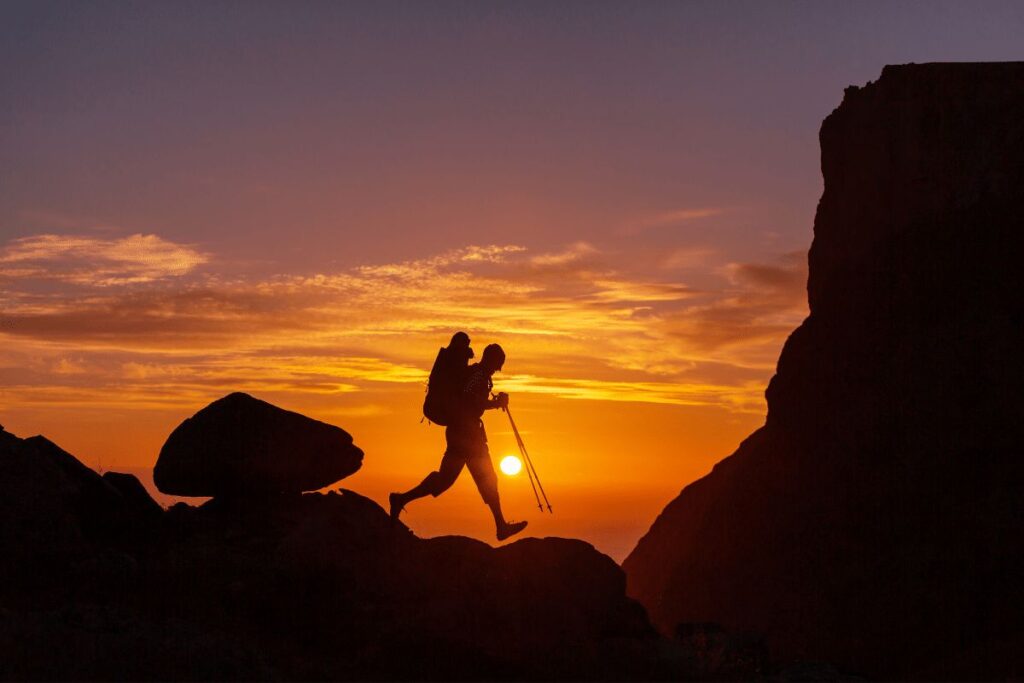
First aid kit: It’s always a good idea to bring a first aid kit on any hike, but it’s especially important in the desert where help may be far away. Be sure to include supplies for snake bites and scorpion stings.
Hydration system: A CamelBak or other type of hydration system is essential for long hikes in the desert. It will allow you to drink hands-free, which can be a big help.
Snacks: Bring plenty of snacks, such as energy bars and trail mix. Your body will need the extra fuel to tackle a long hike in the desert heat.
Flashlight or headlamp: If you’re out after dark, you’ll need some kind of light source to get safely back to your car or campsite. A flashlight or headlamp is essential.
Map and compass: It never hurts to be prepared and having a map and compass on hand can help if you lose your way.
Rain gear: Even though it doesn’t often rain in the desert, it’s still smart to be prepared for any possibility. Pack a lightweight rain jacket just in case.
Insect repellent: Bug bites can be a nuisance while you’re out on the trail, so be sure to bring along insect repellent with DEET to ward off those pesky critters.
Best Times to Visit
The best time to visit Arizona for pro-level hiking is during the spring or fall. The temperatures during these seasons are mild, making it comfortable to hike for long periods of time. In addition, the vegetation is not as dry during these times, which means there is less risk of wildfires.
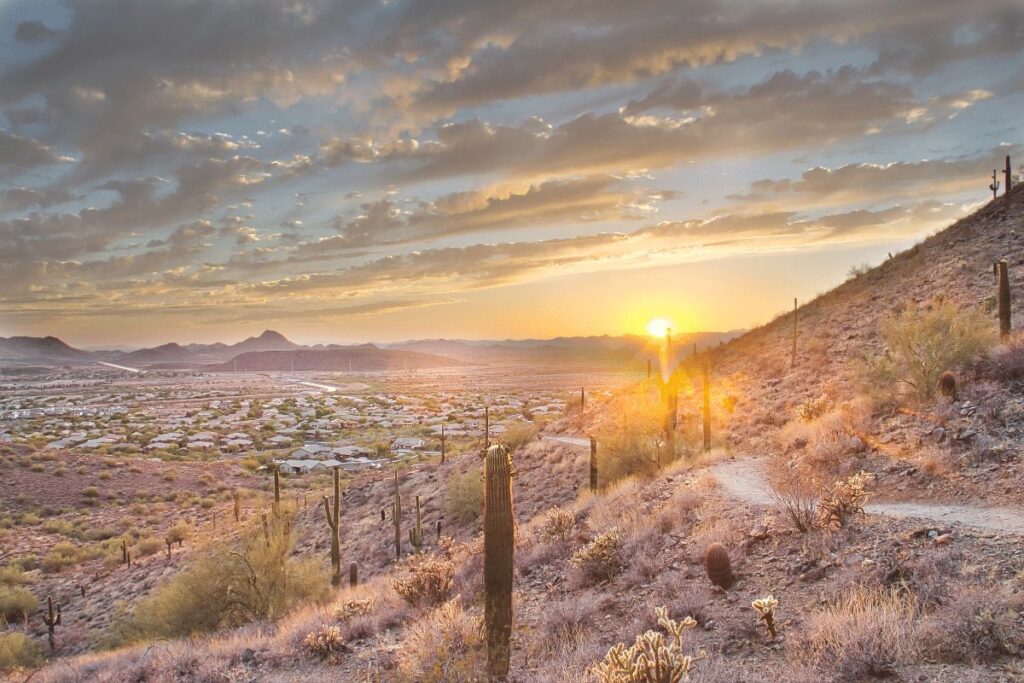
During the summer months, it is much hotter and can be quite uncomfortable during a hike. The vegetation is also much drier, making it more prone to wildfires.
In the winter months, temperatures drop significantly in Arizona and there is a higher chance of rain or snow. This could make commercial flights or roads unsafe. Therefore, spring and fall are typically considered the best time for pro-level hiking in Arizona.
Physical Challenges and Training
Finding the perfect trail can be daunting, especially in a state as large and varied as Arizona. If you’re looking to take your hiking to the next level, here are some tips for conquering the desert terrain.
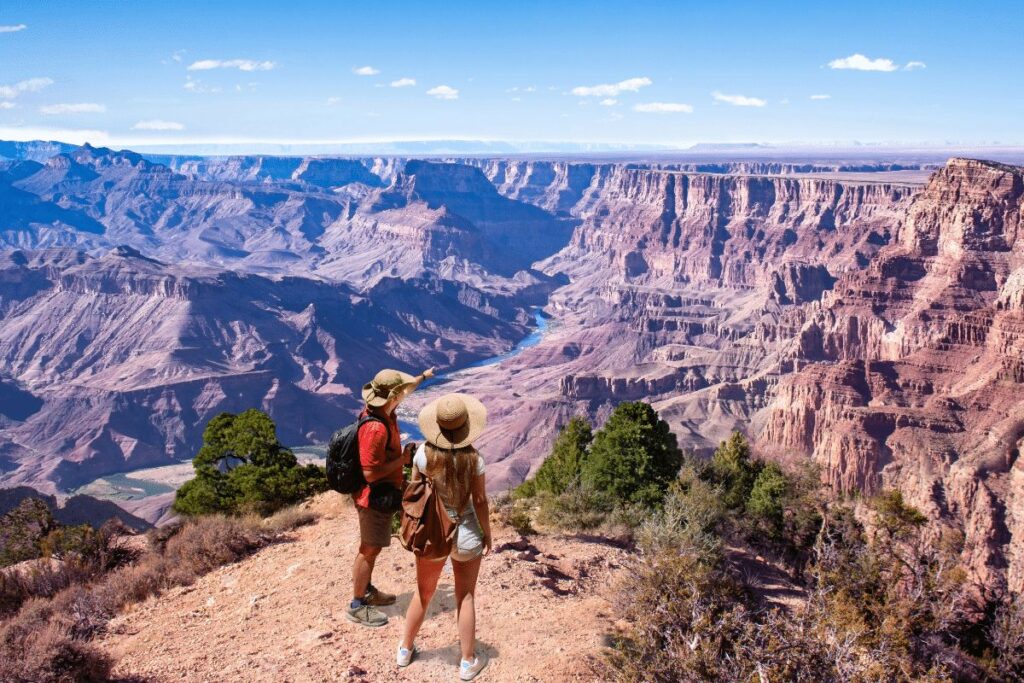
Arizona’s desert landscape can be tough on the body, so it’s important to be in good physical shape before attempting any long hikes.
Make sure you’re properly hydrated and pack plenty of water and snacks for energy. It’s also a good idea to wear sunscreen and a hat to protect yourself from the harsh sun.
If you’re new to hiking, start with shorter trails and gradually work your way up to longer ones. Once you’ve built up your endurance, you’ll be able to tackle any trail Arizona has to offer.
Get used to the desert terrain by checking out some of Arizona’s numerous national and state parks, many of which are free or have a minimal fee.
Scout out trails ahead of time and note the route, how much elevation gain there is, and how warm it gets during the day. You should also familiarize yourself with native plants and animals so you can properly identify them on the trail.
When planning for a long hike in Arizona’s desert, make sure you allow yourself plenty of time to get to your destination. This means starting out early in the morning and walking steadily throughout the day. If you’re unfamiliar with any area, it may be beneficial to hire a guide who knows the terrain well.
Finally, listen to your body—it will tell you when it’s time to rest or push forward. With an eye on safety and preparation, these tips should help ensure that your next Arizona hiking adventure is a success!
Navigating the Terrain
Assuming you have the proper gear, water is the most important factor when hiking in the desert. You should plan to drink at least one gallon of water per day, more if it’s particularly hot.
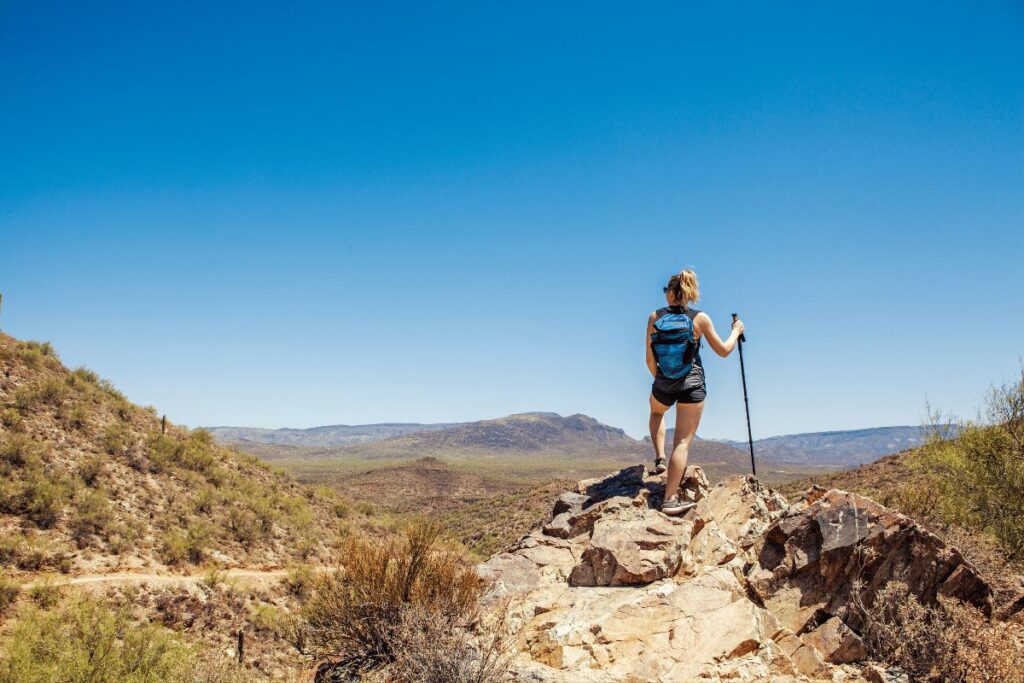
It’s best to hike in the early morning or evening when it’s cooler and take plenty of breaks during the hottest part of the day.
It’s also important to be aware of your surroundings. Look out for cacti, snakes, and other hazards. Be sure to wear sunscreen and a hat, and carry a first-aid kit just in case. And always let someone know where you’re going before you set out on your hike.
Trip Monitoring
The first step to pro-level hiking in Arizona is trip monitoring. This involves keeping track of your whereabouts at all times and being aware of any potential hazards. There are a few key things to keep in mind when trip monitoring:
Pay attention to the trail: Look out for obstacles, loose rocks, and other potential hazards. Be sure to take note of any changes in elevation or terrain.
Stay hydrated: Drink plenty of water and avoid dehydration by carrying extra water with you on the trail.

Check the weather: Be aware of forecasted weather conditions and plan accordingly. If possible, hike during cooler hours or times of day to avoid heat exhaustion.
Let someone know where you’re going: Before heading out on a hike, be sure to let someone know your intended route and expected return time. This will help them keep track of your progress and ensure help can be sent if needed.
Important Rules of the Trail
There are a few important rules to follow when hiking in Arizona desert terrain. First and foremost, always carry plenty of water. It is easy to become dehydrated in the heat, and there is often little to no shade. At least one gallon per person per day is recommended.
Secondly, watch your step. The ground can be uneven and there may be hidden obstacles. Be sure to wear sturdy footwear with good tread.
Third, be aware of your surroundings at all times. This includes keeping an eye out for wildlife, as well as being aware of the potential for flash floods or other dangerous weather conditions. If you are ever in doubt, it is best to err on the side of caution and turn back.
Following these simple rules will help you enjoy a safe and fun hike through Arizona’s beautiful deserts!
Wildlife Safety Considerations
When it comes to hiking in Arizona, there are a few things to keep in mind in regards to wildlife safety. For starters, the state is home to various dangerous animals, including snakes, spiders, and scorpions.
You will also have exciting sightings of mountain lions, elk, bighorn sheep among others!

As such, it’s important to be aware of your surroundings at all times and to avoid any areas that may be home to these creatures. Additionally, it’s always a good idea to have a first aid kit on hand in case of any accidents or bites.
In terms of dealing with dangerous animals, if you encounter them on the trail, the best course of action is usually to just leave them alone.
Resting and Refueling Spots
Arizona is home to some of the most beautiful and varied hiking terrain in the country. And while it may be tempting to try to tackle all of it at once, it’s important to remember that even the most experienced hikers need to take breaks and refuel occasionally. Here are a few of our favorite spots to do just that:
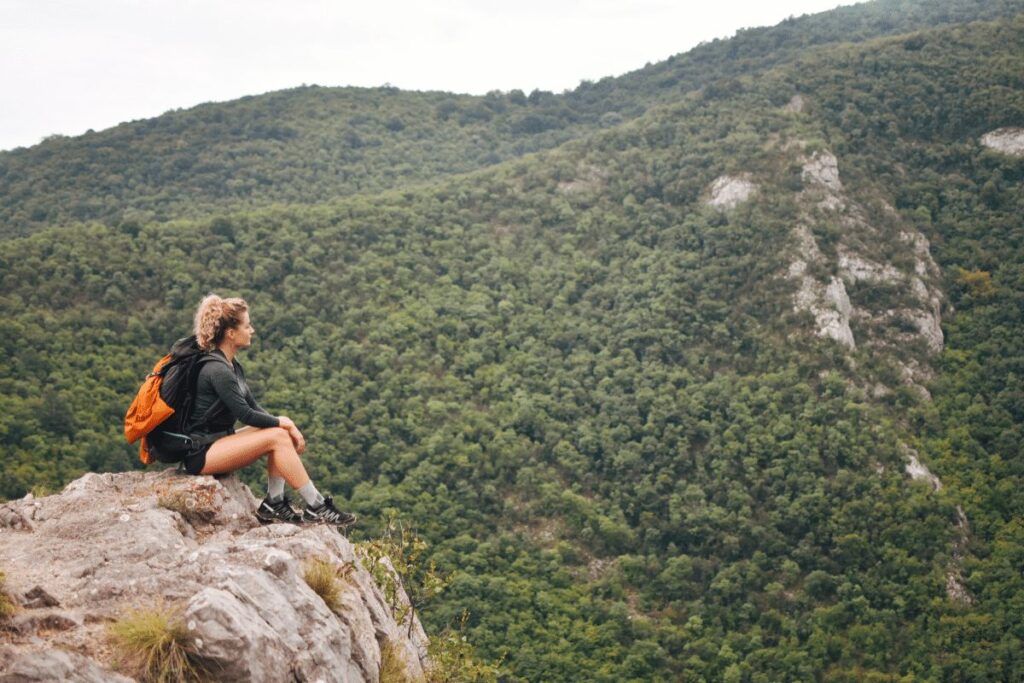
The summit of Humphreys Peak. At 12,637 feet, Humphreys Peak is the highest point in Arizona and offers incredible 360-degree views of the surrounding landscape. It’s also the perfect spot for a quick rest or snack before heading back down.
The Red Rock Secret Mountain Wilderness. This stunning area is full of towering red rock formations and is a great place to escape the heat and enjoy some peace and quiet. There are plenty of flat spots here perfect for setting up camp or taking a nap.
The Ghost Ranch Education Center. Located in the heart of Arizona’s Chiricahua Mountains, this center offers breathtaking views, miles of hiking trails, and ( best of all) plenty of comfortable places to rest your weary head after a long day on the trail.
The Grand Canyon. Words can hardly do justice to the stunning beauty and scale of the Grand Canyon. It’s the perfect spot to take a break, enjoy some of the best views around, and plan your next adventure.
Connecting with Other Hikers
If you’re looking to conquer the desert terrain, it’s important to connect with other hikers who know the area.
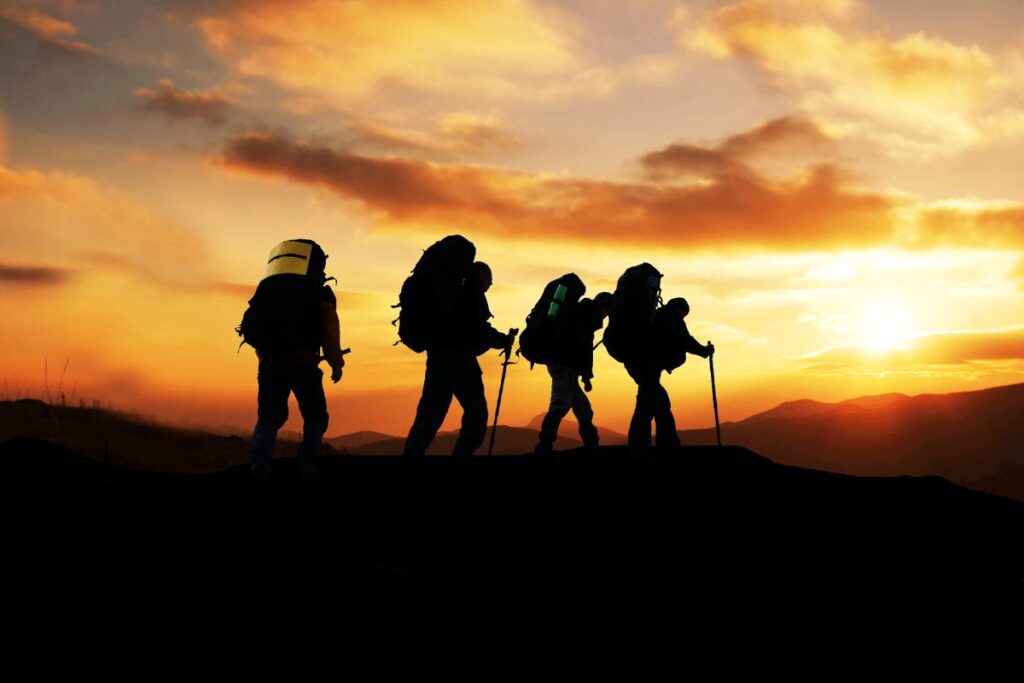
This will help ensure that you have the most up-to-date information on conditions and can find the best trails for your level of experience. There are a few ways to connect with other hikers:
Social media groups: there are many Facebook groups and forums dedicated to hiking in Arizona. This is a great way to get information on trail conditions, ask questions, and find hike buddies.
Local hikes: there are often group hikes organized by retailers or clubs. This is a great way to meet people with similar interests and get some exercise!
Events: there are often hiking events organized by nonprofits or companies. These can be anything from day hikes to multi-day backpacking trips. This is a great way to explore new areas and make some friends along the way!
Specialty websites: there are many resources online for hikers. Whether you’re looking for a hiking partner or the best trails in the area, you can find this information on specialty websites.
Connecting with other hikers is a great way to make your adventure more enjoyable and safe! Be sure to take all necessary precautions when meeting up with people you don’t know and have fun on your journey!
Contingency Planning
Desert hiking is a challenging but rewarding activity that can be enjoyed by both experienced and beginner hikers alike. However, it is important to plan ahead and be prepared for any eventuality when venturing into the desert environment.
Here is a step-by-step guide to contingency planning for a safe and enjoyable hike through Arizona’s desert terrain:
1) Choose your hiking route carefully. Make sure to check maps in advance and choose a route that is appropriate for your level of experience. Avoid areas with known hazards such as steep drop-offs or unstable surfaces.
2) Let someone know your plans. letting someone know your planned route and expected return time is important in case of an emergency. Make sure to leave a note with details if you deviate from your original plan.
3) Pack plenty of food and water. The desert environment is very unforgiving, and it is important to pack enough supplies to last the entire trip. At least two quarts of water per person per day are recommended, as well as high-energy snacks or meals.
4) Be aware of the weather conditions. Check the forecast in advance and be prepared for extreme heat or cold, depending on the season. Also, be aware of potential thunderstorms which can create dangerous flash floods.
5) Wear appropriate clothing and footwear. Lightweight, loose-fitting clothing made from natural fibers will help keep you cool in the heat. Also, make sure to wear proper footwear with sturdy soles to protect your feet from sharp rocks and cacti.
6) Use navigation aids. Never rely solely on a compass or GPS; these can malfunction or be confused in the desert environment. A handheld map and compass are recommended, as well as thorough knowledge of the area you are hiking in.
7) Bring a first-aid kit. Make sure to pack a first-aid kit containing supplies for all types of accidents, including blister care and emergency treatment for snakebites. Check that the items in your kit are current (e.g., medications dated within one year).8) Be prepared for emergency situations. If you think you are lost, stay put and conserve energy until help arrives. Signal for assistance by using brightly colored items or fires if possible, but never leave a fire unsupervised.
Frequently asked questions
If you’re planning on hiking in Arizona, you may be wondering what you need to know in order to conquer the desert terrain. Here are some FAQs that will help you prepare for your hike:
How do I prepare for hiking in Arizona?
Hiking in Arizona can be a unique and exciting experience, but it’s important to be prepared before hitting the trails. Here are some tips to help you prepare for a successful hike in Arizona:
Research the trail: Before you go, research the trail you plan to hike. Look for information about the trail length, difficulty level, and terrain. You can check the National Park Service website or other online resources for this information.
Wear appropriate clothing: Arizona’s weather can be extreme, so it’s important to wear appropriate clothing. Wear comfortable, breathable clothing that will protect you from the sun. Don’t forget to wear a hat and sunglasses to protect your head and eyes.
Bring plenty of water: Staying hydrated is key to a successful hike in Arizona. Bring plenty of water with you, at least one liter per hour of hiking. Consider bringing a hydration backpack or a water filter, in case you need to refill your water bottle along the way.
Bring snacks: You’ll need to fuel up during your hike, so bring plenty of snacks. Energy bars, trail mix, and fruit are great options.
Wear sunscreen: Arizona is known for its sunshine, so be sure to wear sunscreen with an SPF of 30 or higher. Apply it before you head out, and reapply every two hours.
Check the weather: The weather in Arizona can be unpredictable, so check the forecast before you go. Avoid hiking during extreme heat or thunderstorms.
Bring a first-aid kit: It’s always a good idea to be prepared for minor injuries. Bring a first-aid kit that includes bandages, antiseptic, and pain relievers.
Respect the environment: Remember to respect the environment by staying on the trail and not disturbing wildlife. Also, remember to pack out all of your trash.
By following these tips, you can prepare for a safe and enjoyable hike in Arizona.
What are the must-haves for hiking in AZ?
When preparing for a hike in Arizona, there are some essential items you should bring along to ensure you have a safe and enjoyable experience. Here are some must-haves for hiking in AZ:
Water: It’s essential to stay hydrated in the hot and dry climate of Arizona, so bring plenty of water. It’s recommended to bring at least one liter of water per hour of hiking.
Sun protection: The sun in Arizona can be intense, so protect your skin and eyes by wearing sunscreen, a hat, and sunglasses.
Proper footwear: Wear sturdy and comfortable shoes or hiking boots with good traction to protect your feet and ankles.
Navigation tools: Bring a map and compass, or a GPS device, to help you navigate the trails.
Snacks: Bring high-energy snacks like energy bars, trail mix, or fruits to keep you fueled during the hike.
First-aid kit: Bring a small first-aid kit with bandages, antiseptic, pain relievers, and any medications you might need.
Clothing layers: Temperatures can fluctuate in Arizona, so dress in layers that you can add or remove as needed.
Emergency whistle: Bring a whistle to attract attention in case of an emergency.
Backpack: A comfortable backpack with adjustable straps and a waist belt will help you carry all of your essentials and distribute the weight evenly.
By bringing these must-haves, you’ll be better prepared for a safe and enjoyable hiking experience in Arizona.
What part of Arizona has the best hiking?
Arizona has many beautiful places to hike, each with its own unique features and landscapes. Here are some of the top hiking destinations in Arizona:
Grand Canyon National Park: This iconic park is home to some of the most breathtaking views in the world. Hike along the South Rim or venture down into the canyon for a more challenging hike.
Sedona: This picturesque town is surrounded by red rock formations and offers a variety of hiking trails for all skill levels.
Saguaro National Park: Located near Tucson, this park is home to thousands of towering saguaro cacti and offers scenic hikes through the desert landscape.
Camelback Mountain: This popular hiking destination in Phoenix offers challenging trails and stunning views of the city skyline.
Havasu Falls: This beautiful waterfall oasis is located in the Havasupai Indian Reservation and can only be accessed by hiking. The trail is challenging, but the reward is well worth it.
Superstition Mountains: Located east of Phoenix, this rugged mountain range offers a variety of hiking trails with stunning desert views.
These are just a few of the many great hiking destinations in Arizona. No matter where you go, be sure to research the trails and bring plenty of water and sun protection.
What month is best for hiking in Arizona?
The best time of year for hiking in Arizona depends on where you plan to hike and your tolerance for heat. Generally, the best months for hiking in Arizona are from October to April, when temperatures are cooler and more comfortable for outdoor activities.
During these months, the weather is usually sunny and mild, with daytime temperatures ranging from the 60s to the 80s Fahrenheit.
However, it’s important to note that temperatures can vary greatly depending on the location and altitude. High elevations and northern areas of Arizona may experience snow and colder temperatures in the winter months.
Meanwhile, the southern part of Arizona can get very hot in the summer, with temperatures often exceeding 100 degrees Fahrenheit.
If you plan to hike in the summer months, it’s important to take extra precautions to stay safe in the heat. Be sure to start early in the morning, bring plenty of water, wear sun protection, and be prepared for sudden changes in the weather.
It’s also a good idea to choose hikes with shady areas or bodies of water to cool off.
Ultimately, the best time for hiking in Arizona depends on your personal preferences and the specific trail you plan to hike.
Be sure to research the weather and trail conditions before you go, and always prioritize safety when exploring the great outdoors.
Is hiking in Arizona dangerous?
Hiking in Arizona can be dangerous if proper precautions are not taken. However, with proper planning, preparation, and awareness, hiking in Arizona can be a safe and enjoyable experience. Here are some of the potential dangers and safety precautions to keep in mind:
Heat: Arizona is known for its hot and dry climate, especially during the summer months. Heat exhaustion and dehydration are common risks for hikers. To prevent these, it’s important to stay hydrated, wear sun protection, start early in the morning, and take frequent breaks in the shade.
Flash floods: During the monsoon season (June to September), flash floods can occur suddenly, especially in narrow canyons and low-lying areas. Be aware of the weather forecast and avoid hiking in these areas during the monsoon season.
Wildlife: Arizona is home to a variety of wildlife, including snakes, spiders, scorpions, and other potentially dangerous animals. Be aware of your surroundings and avoid approaching or disturbing wildlife.
Terrain: Some hiking trails in Arizona can be steep, rocky, and challenging. Wear sturdy shoes, carry appropriate equipment, and know your limits. Stay on designated trails and avoid risky areas.
Navigation: It’s important to carry a map, compass, or GPS device when hiking in Arizona, as some trails can be difficult to navigate. Stay on marked trails and avoid getting lost.
By taking these safety precautions and being aware of potential dangers, you can have a safe and enjoyable hiking experience in Arizona.
While hiking in Arizona, what animals will I see?
Arizona is home to a diverse range of wildlife, so the animals you might see while hiking depends on the location and the time of year. Here are some of the most commonly seen animals while hiking in Arizona:
Mammals: Some of the mammals you might see while hiking in Arizona include mule deer, elk, bighorn sheep, mountain lions, black bears, coyotes, bobcats, and javelinas.
Birds: Arizona is home to over 550 species of birds, including raptors like hawks and eagles, as well as songbirds, waterfowl, and hummingbirds.
Reptiles: Arizona is known for its reptile population, including various species of snakes, lizards, and turtles. Some of the most commonly seen species include rattlesnakes, gila monsters, and desert tortoises.
Insects: Arizona is home to a variety of insects, including bees, wasps, scorpions, and tarantulas.
Amphibians: Although less commonly seen than other wildlife, Arizona is also home to several species of amphibians, including toads, frogs, and salamanders.
While encountering wildlife can be a memorable part of hiking in Arizona, it’s important to maintain a safe distance and respect their natural habitat. Always stay on designated trails and avoid approaching or feeding wildlife.
Conclusion
With the right preparation and safety precautions, you can conquer the desert terrain of Arizona. By following our twelve essential tips for pro-level hiking in Arizona, we hope to have enabled you with all-important knowledge of how to make your next hike a success. We wish you the best of luck on your trekking expedition and happy trails!
To ensure a successful trekking experience in the desert, we would like to remind you of some additional pieces of advice: always bring plenty of water and electrolytes to stay hydrated and perform obstacle course assessments with a third party before committing to a challenging hike.
Keeping these tips in mind, it is important to never take unnecessary risks and test your limits as you explore the wonderful trails this amazing state has to offer.
Stay safe and make sure that you are able to enjoy all that the great outdoors has to offer during your next hiking excursion.

